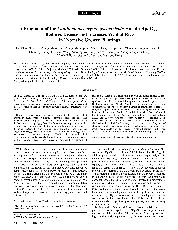摘要
Harpins of phytopathogenic bacteria stimulate defense and plant growth in many types of plants, conferring disease resistance and enhanced yield. In a previous study, we characterized nine fragments of the harpin protein HpaG(Xooc) from Xanthomonas oryzae pv. oryzicola for plant defense elicitation and plant growth stimulation activity relative to the intact protein. In plants grown under controlled conditions, the fragment HpaG(10-42) was more active in both regards than HpaG(Xooc) Here, we demonstrate that the activity of HpaG(10-42) in rice under field conditions significantly exceeds that of HpaG(Xooc) stimulating resistance to three important diseases and increasing grain yield. We carried out tests in 672 experimental plots with nine cultivars of rice planted at three locations. Application protocols were optimized by testing variations in application rate, frequency, and timing with respect to rice growth stage. Of the concentrations (24, 24, 12, and 6 mu g/ml), and number and timing of applications (at one to four different stages of growth) tested, HpaG(10-42) at 6 mu g/ml applied to plants once at nursery seedling stage and three times in the field was most effective. Bacterial blight, rice blast, and sheath blight were reduced 61.6 and 56.4, 93.6 and 76.0, and 93.2 and 55.0% in indica and japonica cultivars, respectively, relative to controls. Grain yields were 22 to 27% greater. These results are similar to results obtained with typical local management practices, including use of chemicals, to decrease disease severities and increase yield in rice. Our results demonstrate that the HpaG(10-42) protein fragment can be used effectively to control diseases and increase yield of this staple food crop.
